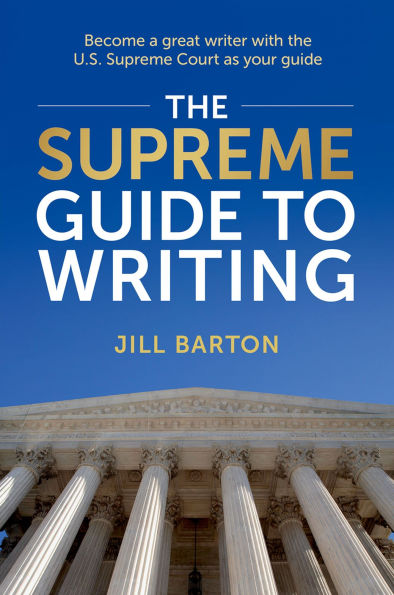Learn to become a great writer and master modern grammar rules with the U.S. Supreme Court justices as your guide. In The Supreme Guide to Writing, law professor Jill Barton cuts through competing advice to detail definitive grammar rules based on the nation's unequivocal authority: the U.S. Supreme Court. The book details a revolution in legal writing, with the justices progressing beyond the drab and technical for the deft and lyrical. With the first-ever analysis of 10,000 pages of Court opinions, the book pinpoints grammar and style rules that the justices follow--and describes the outdated rules they leave behind. Today's Court casts aside formality in favor of pop-culture references, contractions, and approachable language. In addition to establishing grammar and style rules, the book illustrates best practices with hundreds of examples of the justices' most brilliant sentences from the past several years. With step-by-step instructions, the book describes how to emulate the justices' writing styles by breaking down their strategies and techniques. It shows how Justice Elena Kagan lands amusing quips and weaves together down-to-earth analogies, how Justice Neil Gorsuch executes witty retorts, and how Chief Justice John Roberts pens unforgettable lines with understated style and humor. The best writing appears effortless, but it also takes tremendous effort. Legal writing even more so. The Supreme Guide to Writing provides a nonpartisan look at how the justices present their words to the world.
1144984824
The Supreme Guide to Writing
Learn to become a great writer and master modern grammar rules with the U.S. Supreme Court justices as your guide. In The Supreme Guide to Writing, law professor Jill Barton cuts through competing advice to detail definitive grammar rules based on the nation's unequivocal authority: the U.S. Supreme Court. The book details a revolution in legal writing, with the justices progressing beyond the drab and technical for the deft and lyrical. With the first-ever analysis of 10,000 pages of Court opinions, the book pinpoints grammar and style rules that the justices follow--and describes the outdated rules they leave behind. Today's Court casts aside formality in favor of pop-culture references, contractions, and approachable language. In addition to establishing grammar and style rules, the book illustrates best practices with hundreds of examples of the justices' most brilliant sentences from the past several years. With step-by-step instructions, the book describes how to emulate the justices' writing styles by breaking down their strategies and techniques. It shows how Justice Elena Kagan lands amusing quips and weaves together down-to-earth analogies, how Justice Neil Gorsuch executes witty retorts, and how Chief Justice John Roberts pens unforgettable lines with understated style and humor. The best writing appears effortless, but it also takes tremendous effort. Legal writing even more so. The Supreme Guide to Writing provides a nonpartisan look at how the justices present their words to the world.
18.99
In Stock
5
1

The Supreme Guide to Writing
240
The Supreme Guide to Writing
240Related collections and offers
18.99
In Stock

Product Details
| ISBN-13: | 9780197754382 |
|---|---|
| Publisher: | Oxford University Press |
| Publication date: | 08/02/2024 |
| Sold by: | Barnes & Noble |
| Format: | eBook |
| Pages: | 240 |
| File size: | 460 KB |
About the Author
From the B&N Reads Blog
